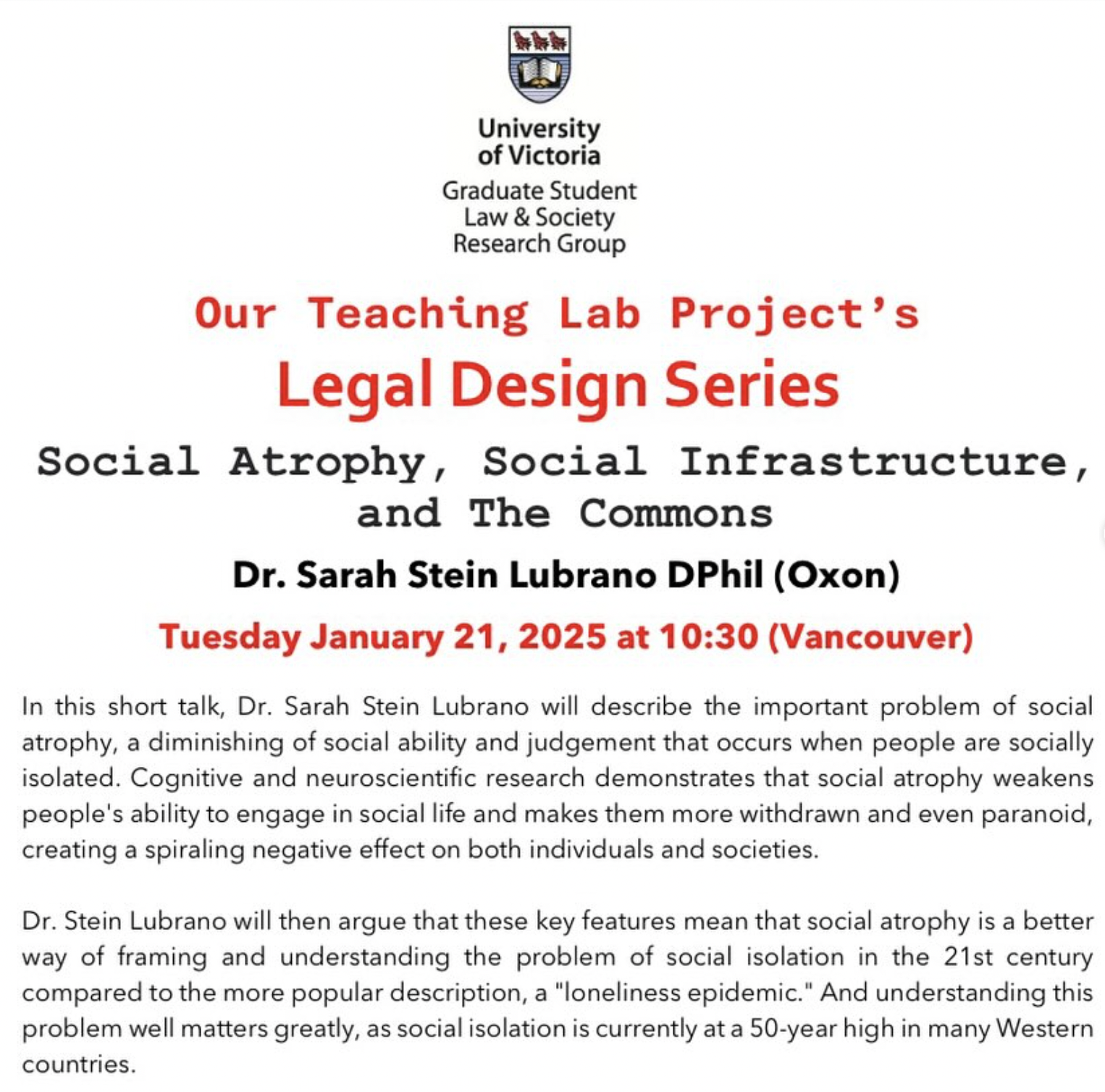In this talk, I explored social atrophy—the erosion of social skills and judgment that occurs when people become isolated. Drawing on cognitive and neuroscientific research, I showed how social atrophy makes people more withdrawn, suspicious, and even paranoid, setting off a self-reinforcing cycle that harms both individuals and society.
I argued that “social atrophy” offers a more precise and useful framework than the popular term “loneliness epidemic.” Understanding the issue in these terms matters: social isolation is at a 50-year high in many Western countries, and how we frame the problem shapes the solutions we pursue.
One key solution I discussed was social infrastructure—the spaces and systems that make regular social interaction easy and habitual. I proposed that both this infrastructure and the social capital it generates are best understood as commons: forms of wealth that should be held collectively, and may require legal protections beyond those applied to private property.
Finally, I considered the political significance of social infrastructure, the limits of online spaces, and the connection to democratic rights—not just to speak, but to act together—drawing on legal theorist Stanley Ingber’s work on assembly and collective agency.
